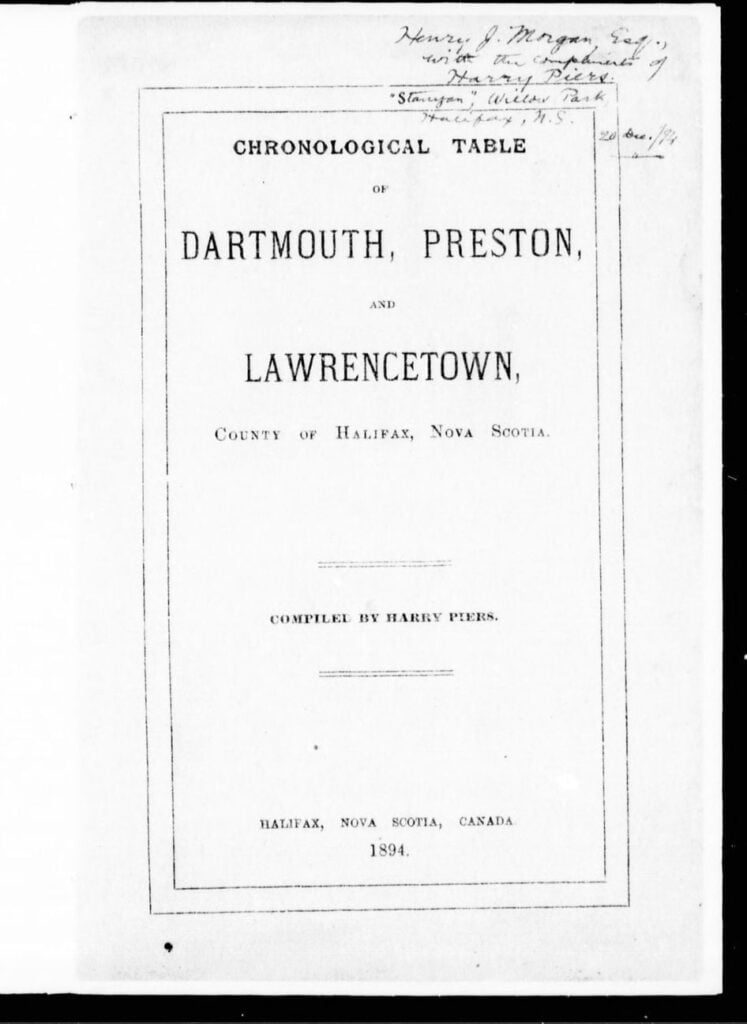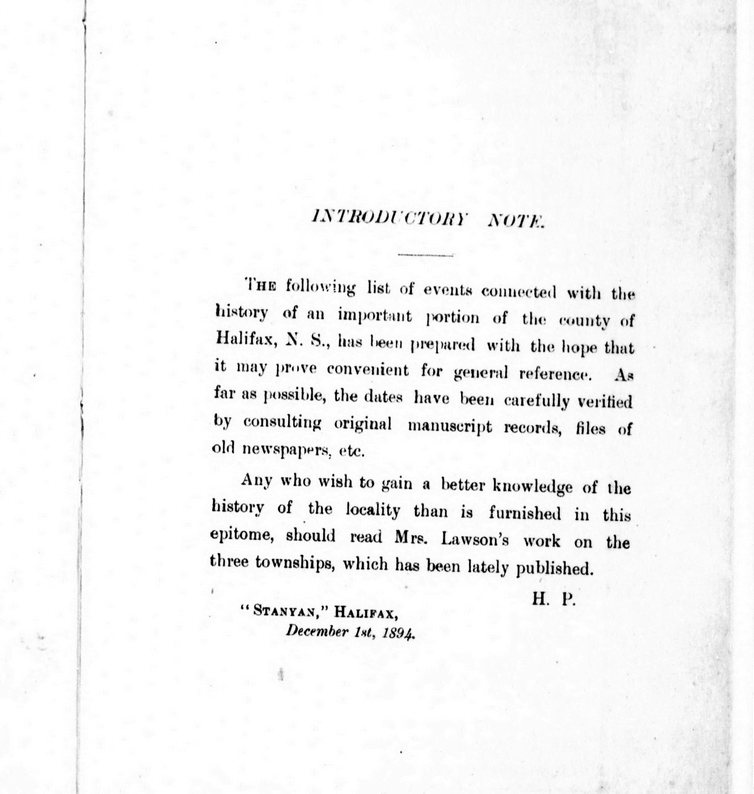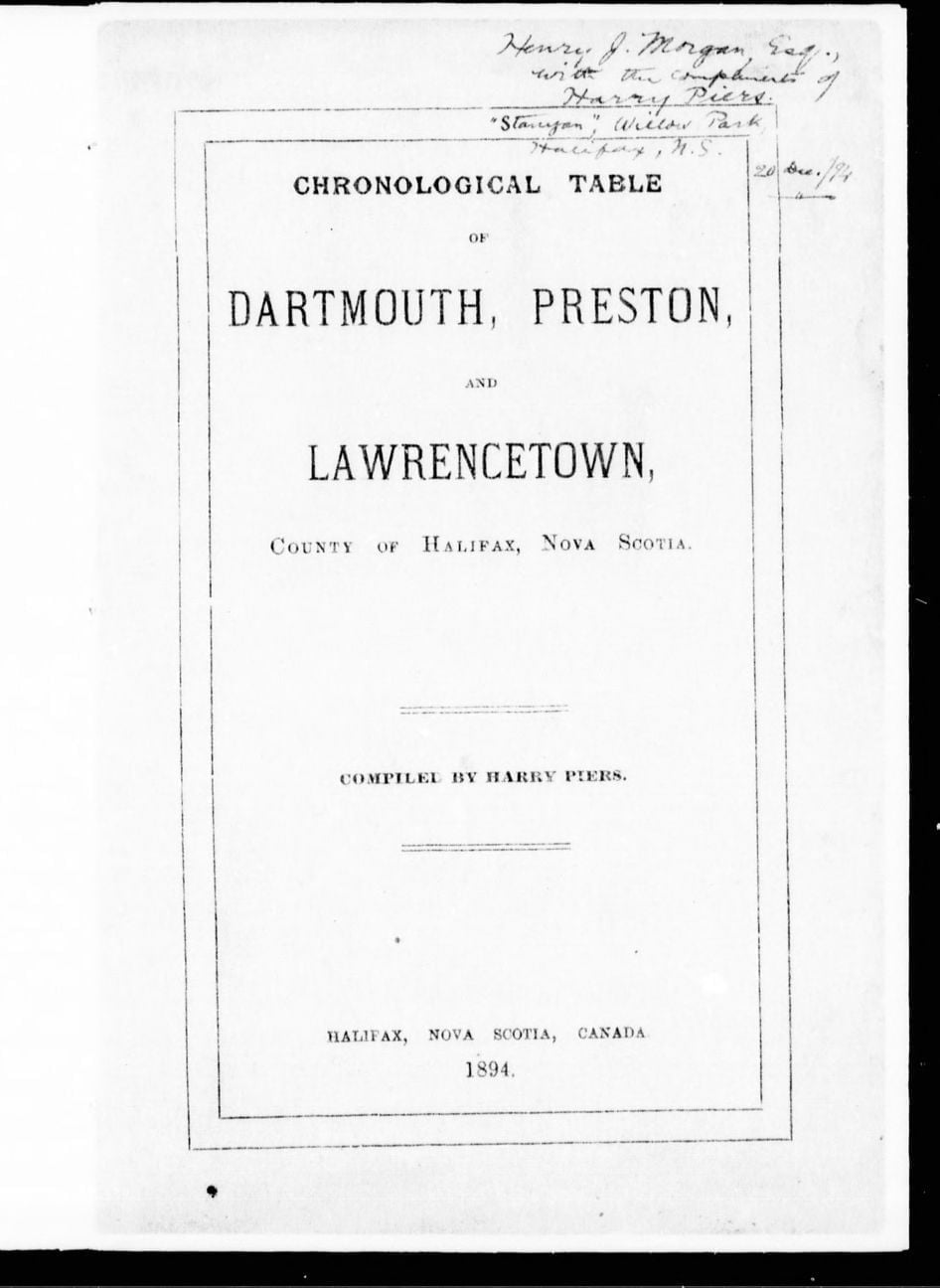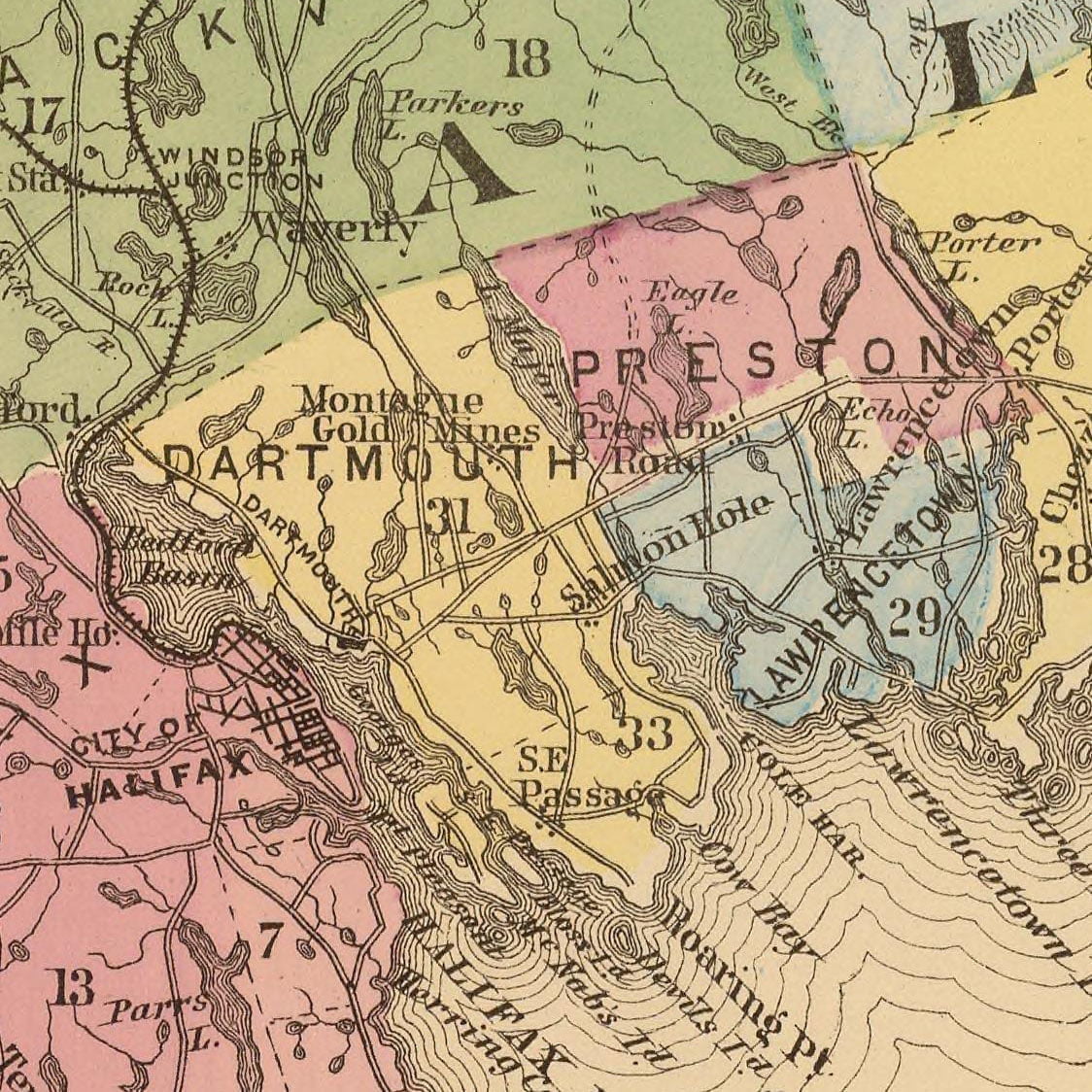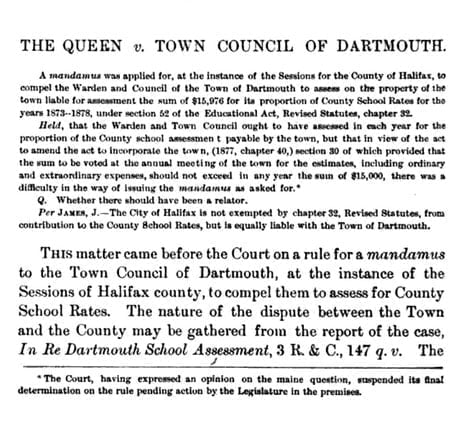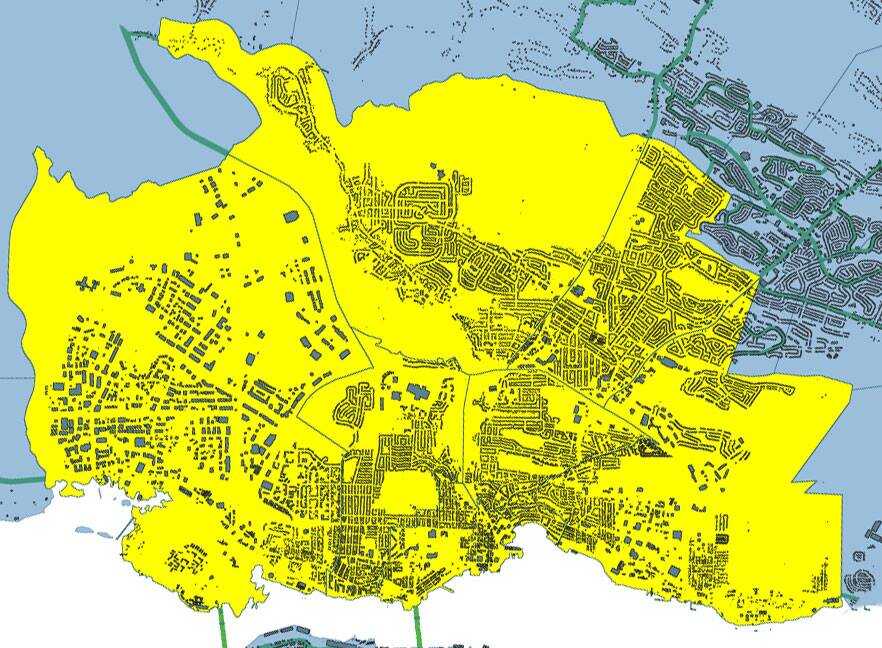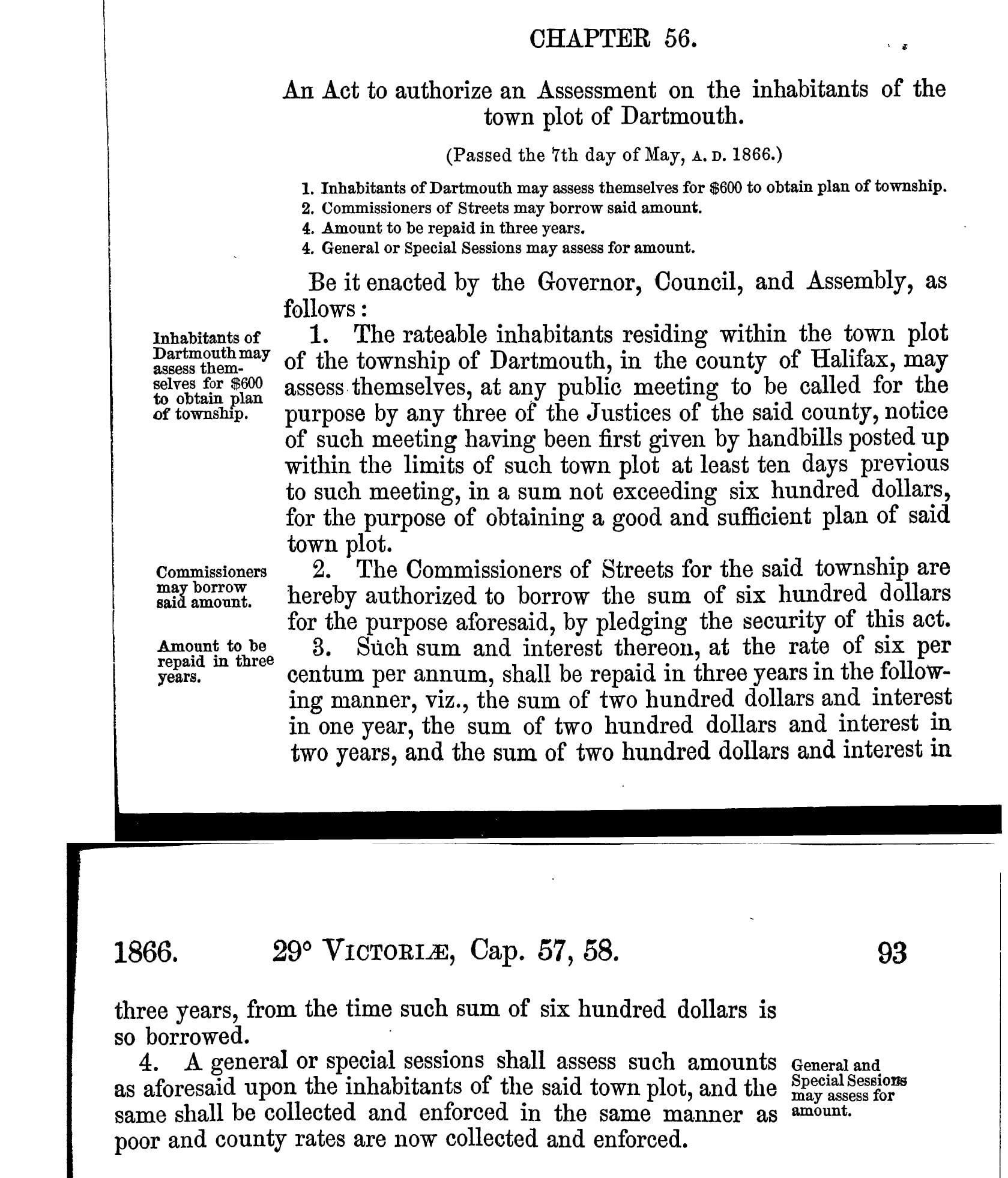This is an interesting paper which places the beginning of Nova Scotia’s (colonial, provincial) Constitution at 1749.
“The natural starting point is Nova Scotia, not merely because it is the oldest [colony], but because the Cornwallis documents furnished the foundation for later constitutional progress. The origin of the Nova Scotian constitution is to be found in the Commission and Instructions to Edward Cornwallis…by Letters Patent dated May 6th, 1749…”
Why the writer ignores the Commission and instructions delivered to Governor Philips in 1719 and 1727, I’m not sure. Those instructions provided machinery for the provision of a civil government, among other things.
In 1719:
“And the better to enable H.M. to compleat what may be further wanting towards the establishing a civil Governmt. in the said Province, you are to give unto H.M. by one of his principal Secretaries of State, and to the Commissioners for Trade and Plantations, by the first opportunity after your arrival there, a true state of the said Province, particularly with respect to the number and qualifications of the people that either are there, or hereafter shall resort thither, of what number it may be proper to constitute an Assembly? What persons are proper and fit to be judges, justices or sherrifs? and any other matter or thing, that may be of use to H.M. in the establishing a civil Government as aforesaid.
In the meantime till such a Governmt. shall have been established you will receive herewith a copy of the Instructions given to the Governor of Virginia, by which you will conduct yourself, till H.M. further pleasure shall be known, as near as the circumstance of the place will admit, in such things as they can be applicable to, and where you are not otherwise directed by these Instructions.”
And in 1727:
“the form of a Civil Governt. to be erected in this Province…is already in some measure provided for by Col. Philips’ Commission and Instructions so far as the present circumstances of this country require, or can admit of till there shall be more inhabitants there…such persons as shall settle in Nova Scotia shall be entituled to all the like privileges, liberties and advantages which are at present enjoy’d by the rest of H.M. subjects in His other American Colonies, and particularly to that of an Assembly so soon as their circumstances will admit of it.”
No such legislatures were instituted before Cornwallis’ time, yet as this writer later states “It was the authorization of the legislature and not its actual establishment that divested the Crown of its power” (to legislate for the colony).
The many earlier incarnations of Nova Scotia and its constitution founded under the auspices of the British crown, stretching back as far as 1621, aren’t mentioned.
According to Bourinot there were three constitutional epochs in Nova Scotia previous to “confederation”, he pegs 1758 and the establishment of a legislature as the line in the sand that serves to delineate from the earlier form of government consisting of governor and council. He too negates to include anything from before Nova Scotia was conquered in 1713:
1. From 1719 until 1758, when the governor and council, with executive and legislative powers, alone carried on the government.
2. From 1758 until 1838, when the government was in the hands of a governor, a council with legislative and executive functions, and assembly elected by the people.
3. From 1838 until 1867, when the government was entrusted to a governor, an executive council, a legislative council, an assembly, and the province obtained the concession of responsible government.
These earlier instructions, including Cornwallis’, relied heavily on “the lawes of Virginia” at which time was regarded as a way to prevent the “eccentricities” of New England governance (self-government) from taking hold in Nova Scotia.
There is apparently “definite evidence” the laws of Massachusetts made an appearance in at least one statute in the form of “Act for Preventing Trespasses” (applied to the Dartmouth Town plot in 1818), (See more on that here).
“The early provincial constitutions were established during the colonial regime, when the British Empire was a unitary state. It was recognized that the new settlements could not be governed effectively from Westminster and that a measure of local representative government was needed. At the same time there was no room for rival sovereignty. “
“There were two types of colonial constitutions, prerogative and statutory”
“The question arose for the first time in the case of Campbell v. Hall (1774, Cowp. 204; Lofft 655.) after the surrender of Granada by France to Britain in 1763. After the proclamation of October 7th 1763, which authorized the summoning of a representative assembly, and after the appointment of the governor but before he summoned an assembly, the Crown imposed a 4 ½% export duty on sugar, thus placing Granada on the same basis as the other British Leeward Islands.
The action was brought by Campbell, a British planter, to recover duties paid, upon the ground that the export duty was illegal. Two contentions were put forward: first, that the Crown could not make laws for a conquered country; and, second, that, before the duty was imposed, the Crown had divested itself of authority to legislate for the colony.
On the first point, it was decided that the Crown had the power to make laws for a conquered country. This power was subject to the terms of the capitulations or treaty of peace and subordinate to the authority of the King in Parliament. Lord Mansfield in the course of a masterly judgement stated:
The only question then on this point is, whether the King had a power to make such change between the 10th of February, 1763, the day the treaty of peace was signed, and the 7th October, 1763? Taking these propositions to be true which I have stated; the only question is, whether the King had of himself that power?
It is left by the constitution to the King’s authority to grant or refuse a capitulation: if he refuses, and puts the inhabitants to the sword or exterminates them, all the lands belong to him. If he receives the inhabitants under his protection and grants them their property, he has a power to fix such terms and conditions as he thinks proper. He is intrusted with making the treaty of peace: he may yield up the conquest, or retain it upon what terms he pleases. These powers no man ever disputed, neither has it hitherto been controverted that the King might change part or the whole of the law or political form of government of a conquered dominion.
On the second point it was decided that the Crown had divested itself of authority to legislate for the colony by making provision for the establishment of a local representative legislature. It was the authorization of the legislature and not its actual establishment that divested the Crown of its power. This doctrine had no application to statutory constitutions. The King in Parliament could not divest himself of the power to make laws for His dominions, a principle inherent in sovereignty, but the King in Council was not sovereign and accordingly subject to the law as laid down in Campbell v. Hall.
The question whether the Crown could make laws for a colony established by settlement did not arise in Campbell v. Hall. It was dealt with, among other questions, in a judgement of the Judicial Committee of the Privy Council, in Kielley v. Carson (1842, 4 Moo. P.C. 63). Baron Parke, after observing that Newfoundland was a settled, not a conquered country, added:
“…to such a colony there is no doubt that the settlers from the mother-country carried with them such portion of its Common and Statute Law as was applicable to their new situation, and also the rights and immunities of British subjects. Their descendants have, on the one hand, the same laws, and the same rights (unless they have been altered by Parliament); and on the other hand, the Crown possesses the same prerogative and the same powers of Government that it does over its other subjects; nor has it been disputed in the argument before us, and, therefore, we consider it as conceded, that the Sovereign had no merely the right of appointing such magistrates and establishing such Corporations and Courts of Justice as he might do by the Common Law at home, but also that of creating a local Legislative Assembly, with authority, subordinate indeed to that of Parliament, but supreme within the limits of the colony, for the government of its inhabitants.”
This statement was cite with approval by Wiles J. in Phillips v. Eyre (1870, L.R. 6 Q.B. 1). There were definite legal limitations upon colonial legislative power.
The first relates to constituent power. Even in the case of the prerogative constitutions, the Crown could, notwithstanding the doctrine in Campbell v. Hall, revoke a colonial constitution and annex the territory to another colony (Re Cape Breton 1846, 5 Moo. P.C. 259); or amend the constitution by revising the royal instruments in which it was embodied. In the case of statutory constitutions, there could be no doubt as to the power of Parliament to repeal or amend its own acts. Consequently, constituent power remained in the Crown or Parliament.
The second legal limitation was a direct consequence of parliamentary sovereignty. Colonial law was void and inoperative if it was repugnant to legislation of the British Parliament, applicable to the colony by virtue of express words or necessary intendment. This was not a constitutional limitation in the strict sense, but rather an impediment to the exercise of power. The colonial law was not ultra vires, it was inoperative. There were British statutes, which, by their terms, were applicable throughout the King’s dominions, and no colonial legislature could enact effective legislation repugnant to their provisions. This doctrine had no application to the part of the British statute law which was in force in the colony under the rule in Uniacke v. Dickson (1848, 2 N.S. 287.)
The third legal limitation was territorial. It was doubtful whether the colonial legislature could make laws having extra-territorial operation.
In addition to these legal limitations, there were political controls, which restrained the local legislature even more. Legislation was subject to effective control by the governor’s veto, and the reservation of bills and disallowance of laws. The governor was a servant of the British government and exercised progressively diminishing influence upon colonial legislation and government. Vitally important and extensive fields were covered by British legislation and administration.
While the matters dealt with by the colonial governments and assemblies were steadily increasing in extent and importance, they did not, at any stage, cover more than a modest part of the “publick peace welfare & good government” of the colonies.
Too close attention to legal and political limitations upon colonial power may give a misleading picture. In order to be understood, they should be looked at with the broader political and economic movements in the colonies as a background.
Colonial constitutional law was clarified by the Colonial Laws Validity Act, 1865. The occasion for the enactment was political and legal trouble in South Australia, but advantage was taken of the need for specific legislation to enact a measure dealing with a number of important constitutional issues.
There were three provisions dealing with repugnancy. The first concerned the view that a colonial law was invalid if repugnant to the English common law. This view found support in the language used in granting legislative power. For example, in the Cornwallis Commission, following the grant of power, were the words, “which said Laws, Statutes and Ordinances are not to be repugnant to the Laws and Statutes of this our Kingdom of Great Britain”. In South Australia, the Supreme Court carried this view so far as to invalidate Acts of the legislature on the ground of repugnancy to the English common law. Those of you who are familiar with the opinion of Halliburton C. J. in Uniacke v. Dickson (supra) will have some doubt as to whether a Canadian court would have accepted this doctrine. It was necessary to enact legislation to prevent the concession of colonial legislative power from being rendered nugatory by the extreme application of this view. In section 3 it was provided:
(3) No Colonial Law shall be or be deemed to have been void or inoperative on the Ground of Repugnancy to the Law of England, unless the same shall be repugnant to the Provisions of some such Act of Parliament, Order, or Regulation as aforesaid.
After this measure had become law, the only repugnancy that could invalidate a colonial law was repugnancy to a British statute, extended to the colony.
In the second place, the effect of repugnancy to British statutes was restricted:
(2) An Colonial Law which is or shall be in any respect repugnant to the Provisions of any Act of Parliament extending to the Colony to which such Law may relate, or repugnant to any Order or Regulation made under Authority of such Act of Parliament, or having in the Colony the Force and Effect of such Act, shall be read subject to such Act, Order, or Regulation, and shall, to the extent of such Repugnancy, but not otherwise, be and remain absolutely void and inoperative.
It was no longer possible to contend that repugnancy to a British Act would invalidate the entire colonial statute.
The third provision was the very important one in section 1, the interpretation section:
An Act of Parliament, or any Provision thereof, shall, in construing this Act, be said to extend to any Colony when it is made applicable to such Colony by the express words or necessary Intendment of any Act of Parliament.
This rule of construction had already been adopted for Canada in the Union Act, 1840.
The Act also dealt with constituent power. No colonial legislature could amend its own constitution. Further, the decision in Kielley v. Carson had made it clear that the colonial assemblies did not possess the rights and privileges that the House of Commons enjoyed by virtue of ancient usage and prescription, but only those that were necessary to secure free exercise of their legislative functions. It was doubtful whether more extensive privileges could be established by colonial legislation, The legal position in these matters, and also in respect of the constitution of courts, was settled by section 5:
(5) Every Colonial Legislature shall have, and be deemed at all Times to have had, full Power within its Jurisdiction to establish Courts -of Judicature, and to abolish and reconstitute the same, and to alter the Constitution thereof, and to make Provision for the Administration of Justice therein ; and every Representative Legislature shall, in respect to the Colony under its Jurisdiction, have, and be deemed at all Times to have had, full Power to make Laws respecting the Constitution, Powers and Procedure of such Legislature; provided that such Laws shall have been passed in such Manner and Form as may from Time to Time be required by any Act of Parliament, Letters Patent, Order in Council, or Colonial Law for the Time being in force in the said Colony.
Under this provision, the colonial legislature could amend a prerogative, but possibly not a statutory, constitution, make laws concerning legislative privilege, and establish, abolish or reconstitute courts.
The provision in section 4 of the Act, whereby no colonial law was to be invalid by reason of any royal instructions given to the governor, other than those that were included in the letters patent or commission authorizing him to assent to or concur in the passing of laws by the legislature, was not important, It weakened the machinery of imperial control over colonial legislative power, but it is not so closely connected with subsequent Canadian constitutional history as the other provisions of the Colonial Laws Validity Act.
At this stage of constitutional development, the position can be summarized in the words of Sir James Shaw Willes (Phillips v. Eyre, supra, at page 20)
We are satisfied that it is sound law, and that a confirmed act of the local legislature lawfully constituted, whether in a settled or conquered colony, has, as to matters within its competence and the limits of its jurisdiction, the operation and force of sovereign legislation, though subject to be controlled by the imperial parliament.
On the other hand, it was still possible to question a colonial statute upon the grounds of contravention of the statutory or prerogative constitution of the colony, or of repugnancy to a British statute made applicable to the colony by express words or necessary intendment; the territorial limitation remained; and the political controls were unaffected by the statutory reforms.”
II . The Early Constitutions
The natural starting point is Nova Scotia, not merely because it is the oldest, but because the Cornwallis documents furnished the foundation for later constitutional progress.
The origin of the Nova Scotian constitution is to be found in the Commission and Instructions to Edward Cornwallis. The Commission, by Letters Patent dated May 6th, 1749, included the following elements:
- Appointment of the Governor, with provision that he comply with and perform the requirements of the Commission and Instructions, and also the requirements of later Orders in Council or Special Instructions under the Sign Manual and Signet
- Authority to “Chuse nominate & appoint such fitting and discreet persons as you shall either find there or carry along with you not exceeding the number of Twelve, to be our Council in our said Province”. It will be noted that the Council had a threefold function. It was a second chamber of the legislature, the Principal Court of Judicature, and an executive. Further, it was “Our Council”, and not the Governor’s Council
- Authority, with the advice and consent of the Council, to summon a General Assembly of the Freeholders and Planters according to the usage of the rest of the Colonies and plantations in America
- Grant of legislative power : “And you the said Edward Cornwallis with the advice and consent of our said Council and Assembly or the major part of them respectively shall have full power and authority to make, constitute and ordain Laws, Statutes and Ordinances for the Publick peace, welfare and good government of our said province and of the people and inhabitants thereof and such others as shall. resort thereto & for the benefit of us our heirs and Successors, which said Laws, Statutes and Ordinances are not to be repugnant but as near as may be agreeable to the Laws and Statutes of this our Kingdom of Great Britain”
- Provision for disallowance, without limitation as to time
- Provision for veto: “And to the end that nothing may be passed or done by our said Council or Assembly to the prejudice of us our Heirs & Successors We Will and Ordain that you the said Edward Cornwallis shall have and enjoy a Negative Voice in the making and passing of all Laws, Statutes & Ordinances as aforesaid”
- Authority to establish Courts of Justice
- Authority to pardon offenders, “Treason and willfull murder” being reserved for the “Royal Pleasure” .
- Measures concerning militia, defence and naval discipline
- Provision for administration of finance
- Provision for disposition of crown lands
The Instructions dated April 29th, 1749, are very lengthy. (Public Record Office, C.O. 218/3, pp.60-73, 80-81) Special mention might be made of those that concern the administration of justice:
- The 66th to the 70th Articles provide for the establishment of the General Court, consisting of the Governor and Council, as the Principal Court of Judicature, and authorize the formation of inferior courts.
- The, 71st to the 81st Articles provide for impartial and speedy justice and liberty of the subject secured by habeas corpus . With the 82nd Article, they constitute an effective charter of civil liberties.’
71st. And Whereas frequent Complaints have been made of great Delays and undue proceedings in the Courts of Justice in several of Our Plantations, whereby many of Our Subjects have very much suffered, and it being of the Greatest Importance to Our Service and to the Welfare of Our Plantations, that Justice be everywhere speedily and duly administered, and that all Disorders, Delays and other undue Practices in the Administration thereof be effectually prevented, We do particularly require you to take especial Care that in all Courts, where you are authorized to preside ; Justice be impartially administered, and that in all other Courts established within Our said Province all Judges and other Persons therein concerned do likewise perform their several Duties without Delay or Partiality.
72nd. You are to take Care that no Court of Judicature be adjourned but upon good Grounds, as also that no Orders of any Court of Judicature be entered or allowed which shall not be first read and approved of by the Magistrates in open Court, which Rule You are in like manner to see observed with relation to the Proceedings of Our Council of Nova Scotia, and that all Orders there made be first read and approved in Council before they are entered upon the Council Books.
73rd. Whereas We are above all things desirous that all Our Subjects may enjoy their Legal Rights and Properties, you are to take especial Care that if any Person be committed for any Criminal Matters (unless for Treason or Felony plainly and especially expressed in the Warrant of Commitment) he have free Liberty to petition by himself or otherwise for a Writ of Habeas Corpus, which upon such Application shall be granted and served on the Provost Marshall Goaler or other Officer having the Custody of such Prisoner, or shall be left at the Goal or Place where such Prisoner is confined; And the said Provost Marshall or other Officer shall within three Days after such Service (on the Petitioners paying the Fees and Charges and giving Security that he will not escape by the way) make Return of the Writ and Prisoner before the Judge who granted our the said Writ, and there certify the true Cause of the Imprisonment, and the said Judge shall discharge such Prisoner taking his Recognizance and Security for his Appearance at the Court where the Offence is cognizable, and certify the said Writ and Recognizance unto the Court, unless such Offences appear to the said Judge not bailable by the Laws of England.
74th. And in Case the said Judge shall refuse to grant a Writ of Habeas Corpus on View of the Copy of Commitment or upon Oath made of such Copy having been denied the Prisoner or any Person requiring the same in his behalf, or shall delay to discharge the Prisoner after the granting of such Writ, the said Judge shall incur the Forfeiture of His Place.
75th. You are likewise to declare Our Pleasure, that in Case the Provost Marshall or other Officer shall imprison any Person above twelve Hours, except by a mittimus setting forth the Cause thereof, he be removed from his sd. Office.
76th. And upon the Application of any Person wrongfully committed the Judge shall issue His Warrant to the Provost Marshall or other Officer to bring the Prisoner before him, who shall be discharged without Bail or paying Fees, and the Provost Marshall or other Officer refusing Obedience to such Warrant shall be thereupon remov’d, and if the said Judge denies his Warrant he shall likewise incur the Forfeiture of his Place.
77th. You shall give Directions that no Prisoner being set at large by an Habeas Corpus be recommitted for the same Offence but by the Court where he is bound to appear, and if any Judge, Provost Marshall or other Officer contrary hereunto shall recommit such Person so bailed or delivered, you are to remove him from his Place, and if the Provost Marshall or other Officer having the custody of the Prisoner neglects to return the Habeas Corpus, or refuse a Copy of the Commitment within Six Hours after Demand made by the Prisoner or any other in his behalf, he shall likewise incur the Forfeiture of his Place.
78th. You are to take Care that all Prisoners in Cases of Treason or Felony have Free Liberty to Petition in open Court for their Trials that they be indicted at the first Court of Oyer and Terminer unless it jappear upon Oath that the Witnesses against them could not be produced, and that they be tried at the second Court or discharged : and the Judge upon Motion made the last Day of the Session in open Court shall discharge the Prisoner accordingly, and upon the Refusal of the said Judge and Provost Marshall _ ” or other Officer to do their respective Duties herein they shall be removed from their Places .
79th. Provided always that no Person be discharged out of Prison who stands-committed for Debt by any Decree of Chancery or any Legal Proceedings of any Court of Record.
80th. And for the preventing of any Exactions that may be inadp upon Prisoners you are to declare our Pleasure, that no Judge shall receive for himself or Clerks for granting a Writ of Habeas Corpus more than 2s. 6d. and the like sum for taking a Recognizance, and that the Provost Marshall or other Officer shall not receive more than 5s. for every Commitment, 1s . 3d. for the Bond the Prisoner is to Sign, 1s. 3d. for every Copy of a Mittimus and 1s . 5d. for every mile he bringeth back the Prisoner .
81st. And further You are to cause this Our Royal Pleasure Signified to You by the Nine Articles of Instructions immediately preceding this to be made publick, and registred in the Council Books of Our said Province.
82nd. You are to take Care that no Man’s Life; Member, Freehold or Goods be taken away or harmed in Our said Province under Your Government otherwise than by Established and known Laws, not repugnant to but as near as may be- agreeable to the Laws of this Kingdom, and that no Persons be sent as Prisoners to this Kingdom from our said Province without sufficient Proof of their Crimes, and that Proof transmitted along with the said Prisoners.
- The 83rd Article provides that “all writs within our said Province be issued in Our Name”. Thus, in the administration of justice, as in the executive government, it was the King’s Court, and not the Governor’s Court, that judged.
- the 85th Article provided for appeals from the inferior courts to the General Court; and, in matters involving more than £300, an ultimate appeal to the Privy Council.
- The 94th Article provided for reservation of bills “of an unusual and extraordinary Nature and Importance, wherein Our Prerogative or the Property of our Subjects may be prejudiced, or the Trade and Shipping of this Kingdom any ways affected”; unless they contained “a clause inserted therein suspending and deferring the Execution thereon until” the King’s pleasure concerning them became known (E.g., Instructions to Governor Wilmot, March 16th, 1764 : Can. Sess. Papers, 1883, No. 70, p. 30.)
The provisions regarding appeals were modified by Additional instructions to Colonial Governors, including Nova Scotia, dated December 3rd, 1753 (P.R.O., C.O. 324/15 , pp. 342-346) whereby provision was made for appeals to the Governor and Council in cases involving upwards of £300; and for ultimate appeal to the Privy Council, in cases involving upwards of £500 and in cases involving revenue matters or future rights even if the amounts involved were less. This measure was later incorporated into the-regular Instructions.
Read, J. E. “The Early Provincial Constitutions” Canadian Bar Review Vol 26 No 4, 1948. https://cbr.cba.org/index.php/cbr/article/view/1501/1501
